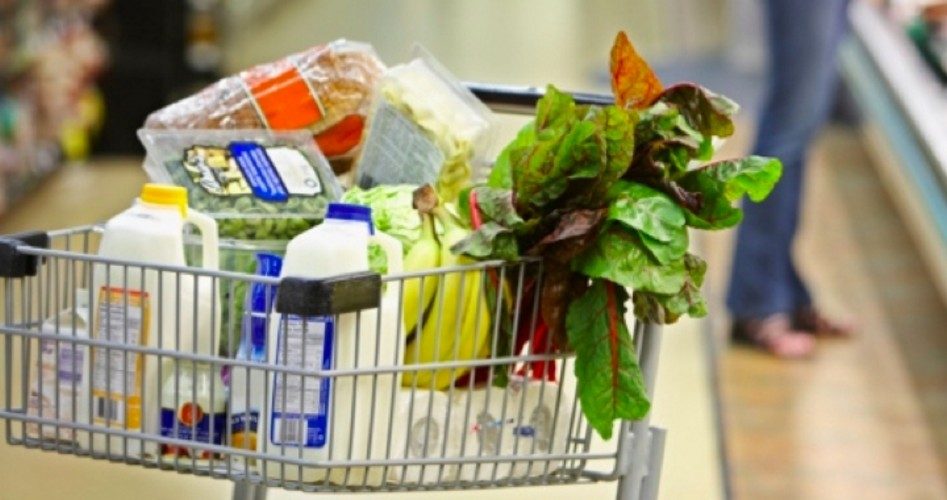
During his introduction of a bill to save $30 billion from the old food stamp program — now called Supplemental Nutrition Assistance Program (SNAP) — Senator John Thune (R-S.D.) stated,
Since President Obama assumed office, participation in SNAP … has increased from 32 million to 47.8 million people, and annual spending on SNAP has doubled to $80 billion in fiscal year 2012. Over the next 10 years, SNAP is projected to cost taxpayers almost $760 billion….
This explosive growth in both the SNAP enrollment and federal cost of the program is alarming and requires lawmakers to take cost-effective legislative control measures.
Not only did Senator Thune understate the expected growth of SNAP, but in his introduction of the bill — offered jointly with Congressman Marlin Stutzman (R-Ind.) — he also overstated the impact the bill would have if passed. The measure would save $30 billion over 10 years, compared to the program’s that is now approaching $80 billion annually, and accelerating.
According to the U.S. Department of Agriculture (USDA), which administers the program, the cost in 2008 was $34.8 billion but exceeded $74.6 billion in 2012 — an annual growth rate of 20 percent. If that growth continues, in 10 years SNAP will cost $600 billion annually. Even if somehow SNAP’s rate of growth is slowed to just 10 percent a year, taxpayers will still be paying $200 billion a year for a program that the USDA estimated back in 1964 would eventually cover just four million people and cost about $360 million annually.
As Thune noted, the number of SNAP participants is approaching 50 million Americans, and has been growing at 12 percent a year. At present that translates into one out of every five households receiving SNAP assistance, and if the present growth rate continues, two out of five households will be on SNAP by the end of the decade.
In some places in the country, entire towns are dependent upon the monthly insertion of federal assistance through SNAP’s Electronic Benefit Transfer (EBT) cards. For instance, in Woonsocket, Rhode Island, one-third of the town’s population — 13,752 out of 41,186 — is on SNAP assistance.
Such government dependency impacts peoples’ lives in Woonsocket enormously. For example, Miguel Pichardo’s International Meat Market does very little business the last day of each month. But at midnight of the first day of each month the EBT cards for Woonsocket’s SNAP recipients are recharged with $3.6 million in federal assistance (an average of $265 per card), and — you guessed it — the first day of the month is a good day for Pichardo’s business. On March 1 Pichardo did $8,200 in business — nearly all of it on EBT cards — compared to only $526 in business on February 28.
The ripple effect is felt all across the town. As Eli Saslow of the Washington Post explained:
SNAP enrollment in Rhode Island had been rising for six years, up from 73,000 people to nearly 180,000, and now three-quarters of purchases at [Pichardo’s] International Meat Market are paid for with Electronic Benefit Transfer (EBT) cards.
Government money had in effect funded the truckloads of food at Pichardo’s dock … and the three part-time employees he had hired to unload it … and the walk-in freezer he had installed to store surplus product … and the electric bills he paid to run that freezer, at nearly $2,000 each month.
Families that are dependent upon that midnight insertion of taxpayer funds into their EBT cards have changed the way they shop. There were five customers waiting in Pichardo’s parking lot 30 minutes before he opened for business on March 1. They shopped the first-of-the-month specials at nearby Shaw’s Market which now has a “dollar aisle” in order to compete with other local dollar stores. Walmart is open 24 hours a day and shoppers came in late on the night of February 28, filled up their carts, and then waited for midnight March 1 so they could pay for their purchases with their EBT cards.
The city buses are so busy on the first and last days of the month that taxi drivers wait by bus stations to handle the overflow traffic. The bus company has had to limit the number of shopping bags each customer can bring onto the bus to seven, and taxis are there to help those with more than the buses allow, for $4.75.
One of those shoppers whom Saslow followed spent more than half of her SNAP EBT card balance by noon on Friday and hadn’t completed even half of her shopping for her husband and two kids. She figured that she had enough to cover them for the next week or 10 days, and then she would go back to counting pennies. She has the first of the month circled in red on her calendar.
The SNAP program has grown so rapidly over the last five years, partly because of the recession and partly because of the relative ease of qualifying for it, that Thune’s bill, even if passed, will have only a negligible impact on it. As dependence on it grows, there is less and less incentive by politicians such as Thune or dependents such as Pichardo to change anything. At present growth rates, the only thing likely to slow down SNAP is the inevitable inability of the government to continue to pay for these programs. When that happens, dependents all across the country, including those living from EBT to EBT in Woonsocket, are going to have another major adjustment to make in their lives.
A graduate of Cornell University and a former investment advisor, Bob is a regular contributor to The New American magazine and blogs frequently at www.LightFromTheRight.com, primarily on economics and politics. He can be reached at [email protected]


